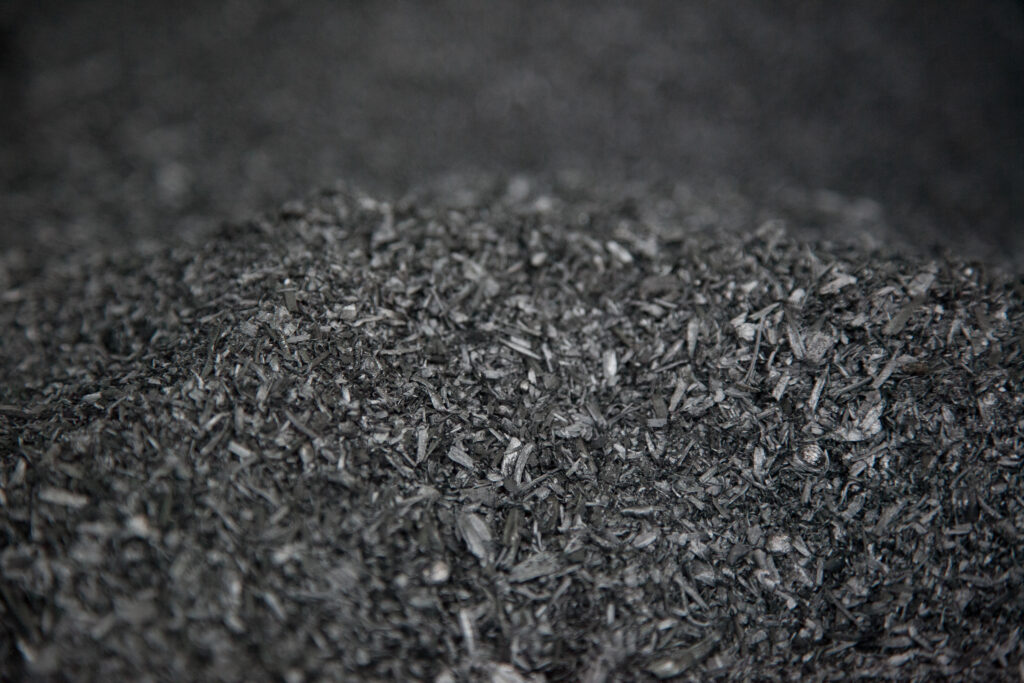By Jazlyn Yarbrough
The concrete production and delivery industry contributed $56 billion to the United States economy last year. However, one of the main components in concrete contributed to almost 8% of carbon emissions worldwide. With the built environment growing every day and no end in sight, reducing carbon emissions while also meeting demands poses a great challenge.

There has been some talk within the research industry to find substitutes or different additions to add to concrete to help reduce the percentage of carbon emissions during production. Biochar is a fine, lightweight, carbon-rich material that is produced from plant materials in a process called pyrolysis. When biochar is added to cement, it is able to suck up a percentage of its weight in carbon dioxide from the air.
In addition, biochar concrete is also similar in strength to regular cement. It is estimated that this substitution of biochar can allow the concrete to continue to remove carbon dioxide for the lifecycle of the concrete.
So what does this mean for the construction industry in the United States? The growing building sector accounts for 34% of greenhouse gas emissions, which is about a third of all emissions for the country. This is a significant amount that puts carbon neutrality goals at risk of being achieved by 2050. With the advancement of technology such as biochar in concrete, changes can be made in order to significantly reduce carbon emissions, but the need for attention to this new method is crucial to its success.
There are several universities that are in the process of experimenting with biochar in concrete. Researchers at Washington State University have been working with its Office of Commercialization and are working on getting seed grant money to start putting their technology to work for different uses. While this is great, they are also seeking partners within the construction industry to work on field demonstrations and licensing for the technology produced at Washington State.
Significant reduction efforts require support not only from within the research and construction sector but from the government as well. Other countries are starting to introduce policies that address industrial emissions including those caused by cement.
The Cement Association of Canada has created and published a “Roadmap to Net-Zero Carbon Concrete by 2050” in conjunction with the Canadian government which plans to increase the price of carbon each year. Several bodies in the European Union have also created agreements that target specific products like cement that cause significant amounts of carbon emissions.
There have been no significant policy moves made in the United States outside the General Services Administration’s standards that were proposed to require federal contractors to use climate-friendly concrete in major projects. Although this was proposed, the U.S. Supreme Court imposed limits on the authority of the federal government and its ability to impose regulations to reduce carbon emissions.
How do we move forward now? The best course of action for this technological advancement of biochar in concrete is to help it gain traction within the industry. There are many different types of carbon capture concrete being tested, but biochar has little negative impact on the environment and proves to be as strong or stronger than regular concrete. Biochar is also projected to reach $507 million by 2030 which will significantly benefit the United States economy. This is a huge growth in the industry as the market was $146 in just 2022.

The downside to the implementation of biochar into concrete is that for one it’s quite expensive in comparison to regular concrete. Traditional concrete in the industry currently costs between $4.07 and $6.11 per square foot. Biochar itself (not added to the concrete mix) costs around $9 per cubic foot.
Convincing those in the industry to use more expensive concrete may be difficult. We also are unsure of how long the widespread adoption of biochar will take throughout the construction industry in the United States, especially without the support of the government and regulations within the industry.
Although there are some challenges to getting biochar to the forefront of the construction industry quickly, the benefits that will be achieved with the material are well worth the trek. Climate change is dooming over our heads every day and the boom in the construction industry will continue in the upcoming years.
The built environment is set to double by the year 2050, and with ambitious goals to reach net-zero the same year technological advancements within our building practices must be taken seriously to significantly reduce the environmental impact.
Jazlyn Yarbrough is a fourth-year sustainability and the built environment student at the University of Florida.
If you are interested in submitting an opinion piece to The Invading Sea, email Editor Nathan Crabbe at ncrabbe@fau.edu. Sign up for The Invading Sea newsletter by visiting here.



